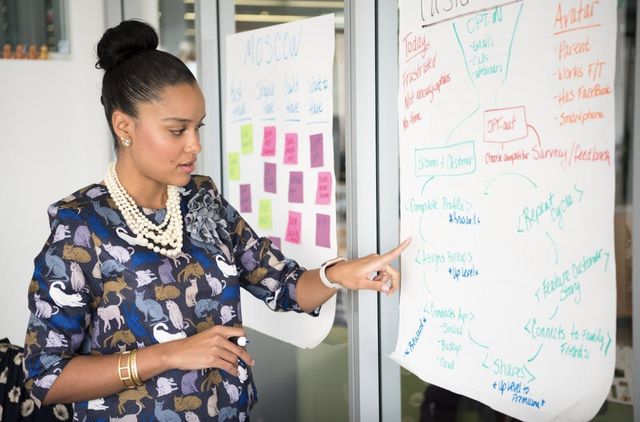Top 10 Tips for Nailing Your Presentation
- Category: Pics |
- 11 Jul, 2024 |
- Views: 455 |

As a college student, presentation is one of the staples, and most importantly, it is something they do repeatedly throughout their academic life. The business owner, in return, will have to utilize these skills at the place of their own work or any social event again, which shows that it is an irresistible skill.
For many, it is terrifying to get up in front of everyone, and stage fright can block your mind and create a barrier between what you think and how confident you are in sending the message. In closing, the answer to preparation is mastering your ability to present.
Preparation is more than assembling a PowerPoint; it involves honing your craft. The guide covers the topics you should be looking out for.
Top 10 Tips for Acing Your Presentation
As a learner interested in perfecting their presentation skills, these are the tips you need to follow. You do not need to spend a dime paying an essay writing service provider or a coach to train you about it when there is the option to perfect the fundamentals highlighted in these tips.
1. Audience
Before embarking on any presentation, it is important to understand the people you will be speaking to. Their demographic will determine how much effort you will put into research and how you will package your message and deliver it.
While studying your audience, take into account their educational background or level of education. These factors will significantly impact their understanding of the presentation and the effectiveness of your mode of delivery.
Focus on making your presentation as engaging as possible by incorporating these strategies:
a) Professional audience
If your audience consists of professionals, package your message to suit it. User professional vocabulary and terminologies. Incorporate professional examples to make the message relatable.
b) Academic audience
If your audience comprises learners, use the correct vocabulary. When delivering your message, back it up with scholarly references.
c) General audience
If the audience comprises diverse demographics with differing backgrounds, deliver your message using the simplest terms. Do not use jargon or introduce complex concepts to explain your message.
2. Goal

Before you even craft the message, define your goal. The scope of your message will be held down by your purpose. It will perform the same function in preparing your speech, enabling you to ensure that you cover what truly matters.
Personally, I love to present inspirations. You can use the stories that your audience can relate to and bring that sense of motivation. Your story just makes it that much better. In informative presentations, state the information that you want to deliver.
Try to remain impartial and be verbose in your explanations. If you have an idea to be sold, elaborate on how your product or service is worth more than any other in the market in a persuasive presentation. This can be compared to other products, and there can be evidence that your product is better.
Entertainment Presentation
If your presentation is light, incorporate humor and make it as light as possible. Include engaging stories to move the audience.
3. Structure
The flow of your message will determine how easily your audience will comprehend your message. Follow the common way of packaging your message:
Introduction
User statements that capture the listeners’ attention to introduce the topic of discussion. The introduction will highlight the issues you intend to cover, preparing them for the message you intend to deliver.
Body
To maintain objectivity in your message delivery, divide it into sections and elaborate on each section. Include statistics and evidence to support your points.
Conclusion
While wrapping up your presentation, touch on the points you mentioned and why you deemed it appropriate to discuss them. Loop a quote and a call to action to give a lasting impression.
4. Visuals
Remember, a worded presentation can be too monotonous to follow. Visuals are more enticing, enough to get the audience’s attention.
5. Practice
No matter how conversant you are when talking to large crowds, practicing your representation multiple times improves your delivery of the message. Consider the following factors when practicing:
Timing
You will not have the audience’s attention for the whole day, and if you do, they might not give you their ears for the time you want. So, as you practice, ensure that your presentation is within the allocated time.
Body Language
Your body language should match the message you intend to put across. Move your body naturally and maintain eye contact as a show of confidence. Strive to be as audible as possible and avoid fidgeting.
6. Prepare for Questions
For the sake of clarity and delivery of the message, anticipate questions about the topic. Prepare adequately for the answers in advance. Be confident in delivering the answer since it cements your confidence in the message.
Another strategy involves introducing a Q&A session at the end of the presentation. This will set the stage for the audience to ask questions and listen carefully before you answer.
7. Anxiety
It is okay to be anxious before a presentation. That is your body’s reaction to doing something you are not used to. However, there are strategies to manage your anxiety, manage your nervous system, and boost your confidence.
Use these strategies to manage your anxiety:
• Breathwork
Place your hand across your tummy and take deep breaths for 15 seconds to 2 minutes. This will calm your nervous system and make you feel safer in your body.
• Visualize
Have a positive view of the outcome of the presentation.
• Prepare
Your confidence is a subject of how prepared you are. Take enough time to research and finish yourself with information before the presentation.
8. Engage
For an effective presentation that impacts the audience, keep them engaged by asking questions and soliciting their reactions. Interactive engagements make the presentation memorable and dynamic.
Use these strategies to engage the audience:
• Asking rhetorical questions
• Looping stories
• Including activities like polls
9. Feedback
Welcome constructive feedback. Remember, no one gets better at anything by doing it once—welcome feedback from your listeners and polish on the mentioned areas.
10. Technical Preparation
Get your technical devices in order before the presentation. Check your microphones and projectors before the material day. Have a backup plan before you start. For instance, save your material on a USB drive in case of a technical malfunction.
Conclusion
Being the best presenter is a function of your preparedness and confidence. Preparing and understanding your message is the most fundamental part of the process. Being conversant with the message boosts your confidence.
The more you do it, the better you will become at it. It is a gradual process; the more you practice, the better you will become at it. Seize any opportunity that comes your way.В

